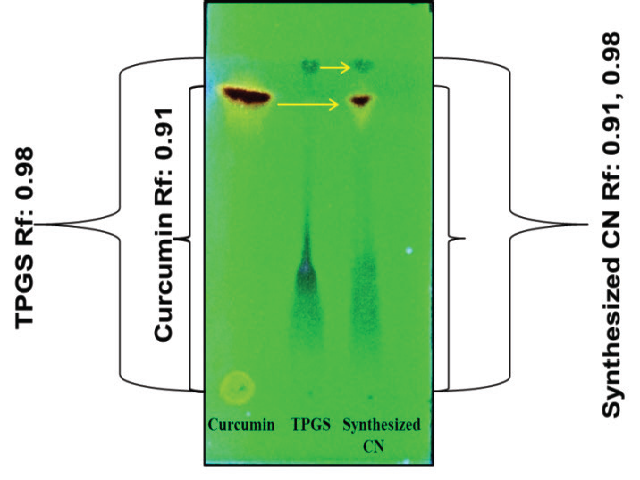Curcumin Nanoformulation: Antioxidant,Antibacterial, and Toxicity Assessment
DOI:
https://doi.org/10.5530/ctbp.2023.4.71Keywords:
Antibacterial, Antioxidant, Brine shrimp, Curcumin, DPPH, HemolysisAbstract
Nanotechnology-based techniques be- comea privilege to the phytochemicals which have poor bioavailability but potential biolog- ical activities. Curcumin is categorized among them that having vast medicinal properties but its hydrophobicity limits its clinical acceptance. The study aimed to evaluate the antioxidant and antibacterial potentials of synthesized and characterized curcumin nanoformulation (CN) and to evaluate its toxicity on human red blood cells and invertebrate brine shrimps. The cur- cumin nanoformulation was synthesized and confirmed by dynamic light scattering and chro- matographic methods. The antioxidant potential of the synthesized CN was analyzed by 2,2-di- phenyl-1-picrylhydrazyl (DPPH) assay, while antibacterial activity was assessed by following the agar well diffusion protocol using Gram-pos- itive and Gram-negative bacteria. The hemo- lysis assay and brine shrimp lethality assay were performed to evaluate the ex vivo toxicity of the synthesized CN.The data revealed that the synthesized CN had a very small particle size (6.06 ± 1.7 nm) with polydispersity index and zeta potential value of 0.219 and -11.8 ± 3.89 mV respectively. The antioxidant and an- tibacterial potential of the synthesized CN were improved as compared to the pure curcumin. The hemolytic and brine shrimp lethality activity of the synthesized CN wassignificantly minimal as compares to its respective positive controls. These findings suggested that the synthesized CN with potential antioxidant and antibacterial activities and almost no toxicity could be a prom- ising therapeutic option in various antimicrobial and free radical toxicity treatments. Moreover, after a detailed safety analysis of synthesized CN, it can be applied in various formulations and treatments.



